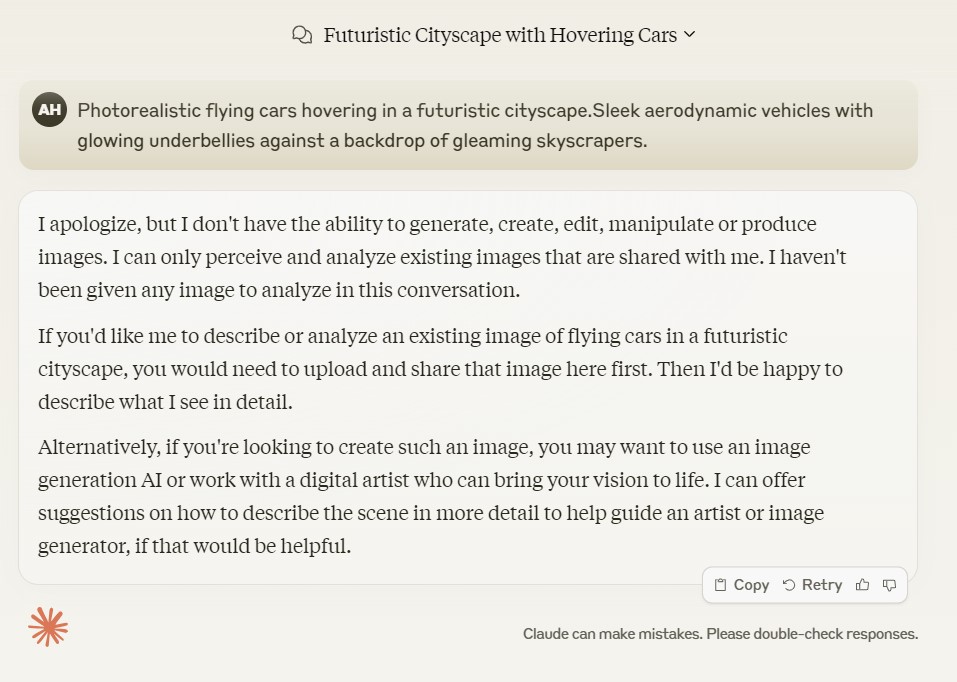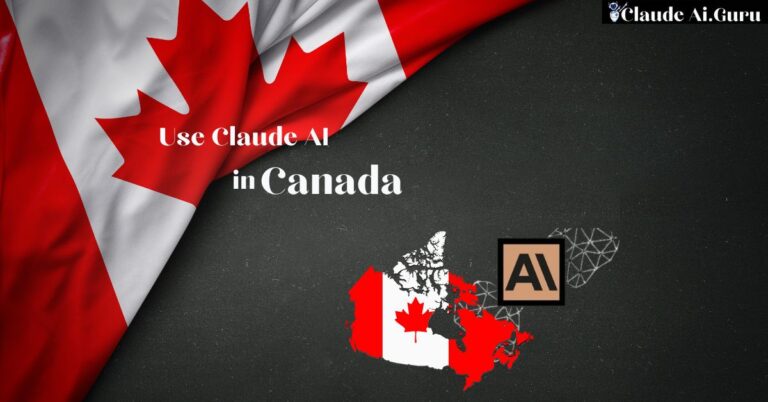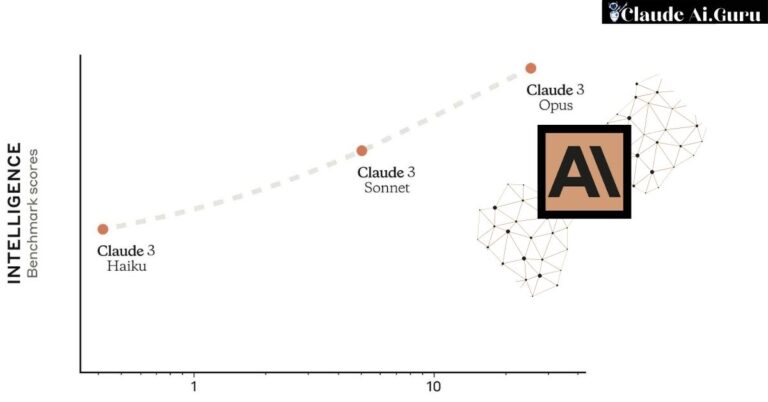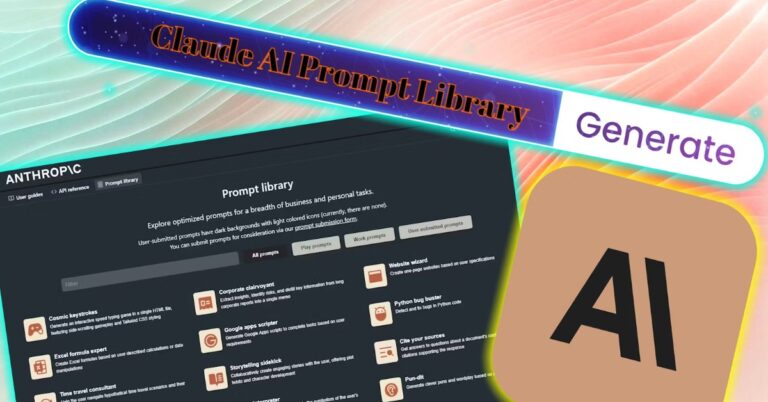Limitations and Potential of AI: Can Claude Generate Images?
Image generation in the emerging AI landscape has become an exciting new frontier. Given the viral success of AI models like DALL-E, Midjourney, and Stable Diffusion in generating dazzling images based on text prompts for anyone to access publicly, it is only natural that we are curious about some other powerful AIs. Claude: A way to generate realistic program inputs that you hadn’t considered before. One of the various systems which raised greater attention in this domain was Claude, built by Anthropic. Claude, however, the question is can Claude generate images?. This broadens the discussion towards the specialization of AI models and what future multimodal AI systems will look like.
Understanding Claude’s Capabilities
Claude, Anthropic’s large language model, has demonstrated remarkable prowess in natural language processing tasks. From engaging in complex conversations to assisting with coding and analysis, Claude represents a significant leap in AI’s ability to understand and generate human-like text. However, when it comes to image generation, Claude faces limitations that are inherent to its design and training.
Why Claude Can’t Generate Images

To understand why Claude can’t generate images, it’s crucial to recognize that AI models are typically specialized for specific tasks. Just as a master chef might not be an expert carpenter, AI models excel in the domains they’re designed for. Claude’s architecture is optimized for processing and generating text, not for creating visual content.
Key differences between text-based AI and image generation AI include:
- Training Data: Claude is trained on vast amounts of text data, while image generation models require extensive datasets of images and their corresponding descriptions.
- Neural Network Architecture: The underlying structure of Claude’s neural networks is designed for language processing, whereas image generation models use architectures like Generative Adversarial Networks (GANs) or diffusion models.
- Output Format: Claude produces text as its output, while image generation models create pixel-based visual content.
The Current State of AI Image Generation
While Claude can’t generate images, the field of AI image generation is advancing rapidly. Models like DALL-E 2, Midjourney, and Stable Diffusion have captured public attention with their ability to create highly detailed and creative images from text descriptions.
Here’s a brief overview of some leading AI image generation models:
- DALL-E 2 (OpenAI): Known for its high-quality, photorealistic images and ability to understand complex prompts.
- Midjourney: Popular for creating artistic and stylized images, often used by digital artists and designers.
- Stable Diffusion: An open-source model that has gained traction for its accessibility and customization options.
- Google’s Imagen: Although not publicly available, it has shown promising results in research papers.
These models represent the current state-of-the-art in AI image generation, demonstrating the potential of specialized AI systems in visual tasks.
The Potential of Multimodal AI
While Claude can’t generate images, it’s important to note that the field of AI is moving towards multimodal systems – AI that can process and generate both text and images. Some examples of progress in this direction include:
- GPT-4 (OpenAI): While not primarily an image generation model, it can analyze images and answer questions about them.
- PaLM-E (Google): A model that combines language understanding with robotic control, showcasing the potential for AI to bridge text, vision, and physical actions.
- CLIP (OpenAI): A model that can understand the relationship between images and text, paving the way for more sophisticated image-text interactions.
These developments suggest that future AI models might be able to seamlessly work with both text and images, potentially including image generation capabilities alongside language processing.
Claude’s Role in the AI Ecosystem
While Claude can’t generate images, it excels in numerous other areas that are crucial for businesses and individuals:
- Natural Language Understanding: Claude can interpret complex queries and provide nuanced responses, making it valuable for customer service and information retrieval.
- Content Generation: From writing articles to crafting marketing copy, Claude can assist in various content creation tasks.
- Data Analysis: Claude can help interpret large datasets and provide insights, valuable for businesses and researchers alike.
- Code Generation and Debugging: Developers can leverage Claude’s abilities to assist with programming tasks.
- Educational Support: Claude can explain complex concepts and assist in learning various subjects.
These capabilities make Claude a powerful tool in its own right, even without image generation abilities.
The Future of AI and Image Generation
As AI technology continues to advance, we can expect several developments:
- Improved Integration: Future AI systems may seamlessly combine language processing and image generation capabilities.
- Enhanced Realism: Image generation models will likely produce increasingly photorealistic and complex images.
- Ethical Considerations: As AI-generated images become more prevalent, discussions around copyright, misinformation, and ethical use will become more critical.
- Specialized vs. Generalist Models: There may be a continued debate between the efficacy of specialized AI models versus more generalist approaches.
- Accessibility: As technology improves, AI image generation tools may become more accessible to the general public, potentially revolutionizing fields like graphic design and visual arts.
Conclusion
While Claude cannot generate images, its sophisticated language processing capabilities make it a powerful tool in the AI landscape. The specialization of AI models reminds us that different tasks often require different tools. As the field of AI continues to evolve, we may see more integration between various AI capabilities, potentially leading to systems that can seamlessly work with both text and images.
For now, Claude’s limitations in image generation are a reminder of the importance of choosing the right tool for the task at hand. In the dynamic world of AI, today’s limitations often become tomorrow’s breakthroughs. As we continue to push the boundaries of what’s possible with artificial intelligence, the interplay between specialized and generalist AI models will undoubtedly shape the future of this transformative technology.
FAQs
Claude can analyze and describe images if they are provided to it, but this capability depends on how Claude is integrated into the interface you’re using. In many implementations, Claude can:
Describe the contents of an image in detail
Answer questions about elements within an image
Identify objects, people, text, and scenes in images
Provide context or background information related to what’s shown in an image
However, Claude cannot access or “see” images unless they are specifically uploaded or provided in the conversation. It’s also important to note that Claude’s image analysis capabilities may vary depending on the specific version and implementation of the AI. Always check the most current information about Claude’s capabilities in your particular use case.
Claude excels in various text-based tasks including natural language understanding, content generation, data analysis, code generation and debugging, and providing educational support.
While DALL-E and Midjourney specialize in creating images from text prompts, Claude focuses on text-based tasks. They have different architectures and training, optimized for their specific functions.
It’s uncertain. Future developments in AI may lead to more integrated systems, but currently, Claude’s architecture is not designed for image generation.
Specialized models like Claude can perform exceptionally well in their designed tasks. For Claude, this means advanced language processing, which is crucial for many business and research applications.






